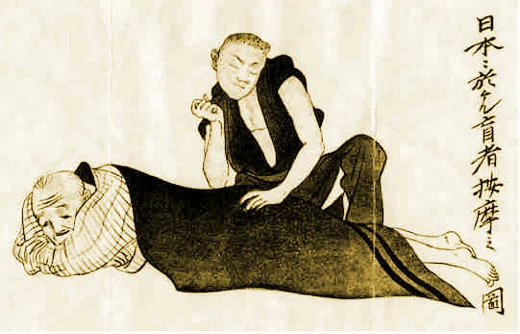Tui Na
Introduction
Tui Na (pronounced "twayee-nah") is a therapeutic form of bodywork that has been used in China for more than 2,000 years. A combination of massage, acupressure and other forms of body manipulation, Tui Na works by applying pressure to acupoints, meridians and groups of muscles or nerves to remove blockages that prevent the free flow of “Qi”, or energy. Removing these blockages restores a more harmonious flow of Qi throughout the body, bringing it back into balance. This allows the body to naturally heal itself, leading to improved health and vitality. It works deeply with the positive energy of the body.
History
Tui Na dates back to the Shang Dynasty of China, 1700 B.C.E. Oracle bones show that Tui Na massage was used to treat children's diseases and digestive complaints in adults. The details of Tui Na's techniques and uses were originally documented in The Yellow Emperor's Classics of Internal Medicine, which was written about 2,500 years ago. Its popularity and recognition grew steadily to the point that by 600 C.E., many traditional Chinese medical schools had incorporated Tui Na into their programs as a separate department, including the Imperial Medical College. Tui Na flourished throughout China until the Qing Dynasty where it was suppressed along with other Chinese cultural arts. In modern times, Tui Na has been restored along with other traditional medical arts and holds a place of high esteem in Chinese medicine along with Acupuncture and Herbalism.
I blend a combination of Acupressure, Chinese Bodywork (Tui Na), Swedish, and Deep Tissue massage. I will work with you to determine which modalities best suit your individual needs.
What to Expect on Your First Visit
In a typical Tui Na session, the client remains clothed but wears no shoes, and sits on a chair or lies on a massage table. The practitioner will ask the patient a series of questions, then begin treatment based on the answers to those questions.
Tui Na practitioners employ a variety of methods to achieve their goal. Commonly used techniques include hand techniques to massage the soft tissue of the body, acupressure techniques to directly affect the flow of Qi, and manipulation techniques to realign the musculoskeletal and ligamentous relationships. The major focus of application is upon specific pain sites, acupressure points, energy meridians, and muscles and joints.
The type of massage delivered by a Tui Na practitioner can be quite vigorous and tends to be more task-focused than other types of bodywork. The client usually feels relaxed but energized by the treatment. Some patients may experience feelings of sleepiness or euphoria.
“I just wanted to tell you that I had a very strong reaction to the session we had yesterday. I felt so energized and just really happy after our session—it really felt like a lot of my personal energy that had been tied up came back to me/opened up. It was really a gift, thank you.”
Conditions and Contraindications
Tui Na is well suited for the treatment of musculoskeletal disorders and chronic stress-related disorders of the digestive, respiratory and reproductive systems. It is a very effective therapy for arthritis, neck pain, shoulder pain, back pain, sciatica and muscle spasms. Tui Na can also help alleviate stress related disorders like headaches, insomnia, depression, constipation, and premenstrual symptoms. However, because Tui Na is designed to improve and restore the flow of Qi, treatment often ends up causing improvements to the whole body, not just a specific area. The greatest advantage of Tui Na is that it focuses on maintaining overall balance with both physical and mental health.
As with all forms of care, there are certain instances in which Tui Na should not be performed. Patients with osteoporosis or conditions involving fractures, for instance, should not receive Tui Na. Neither should patients with infectious diseases, a fever, skin lesions or open wounds.

